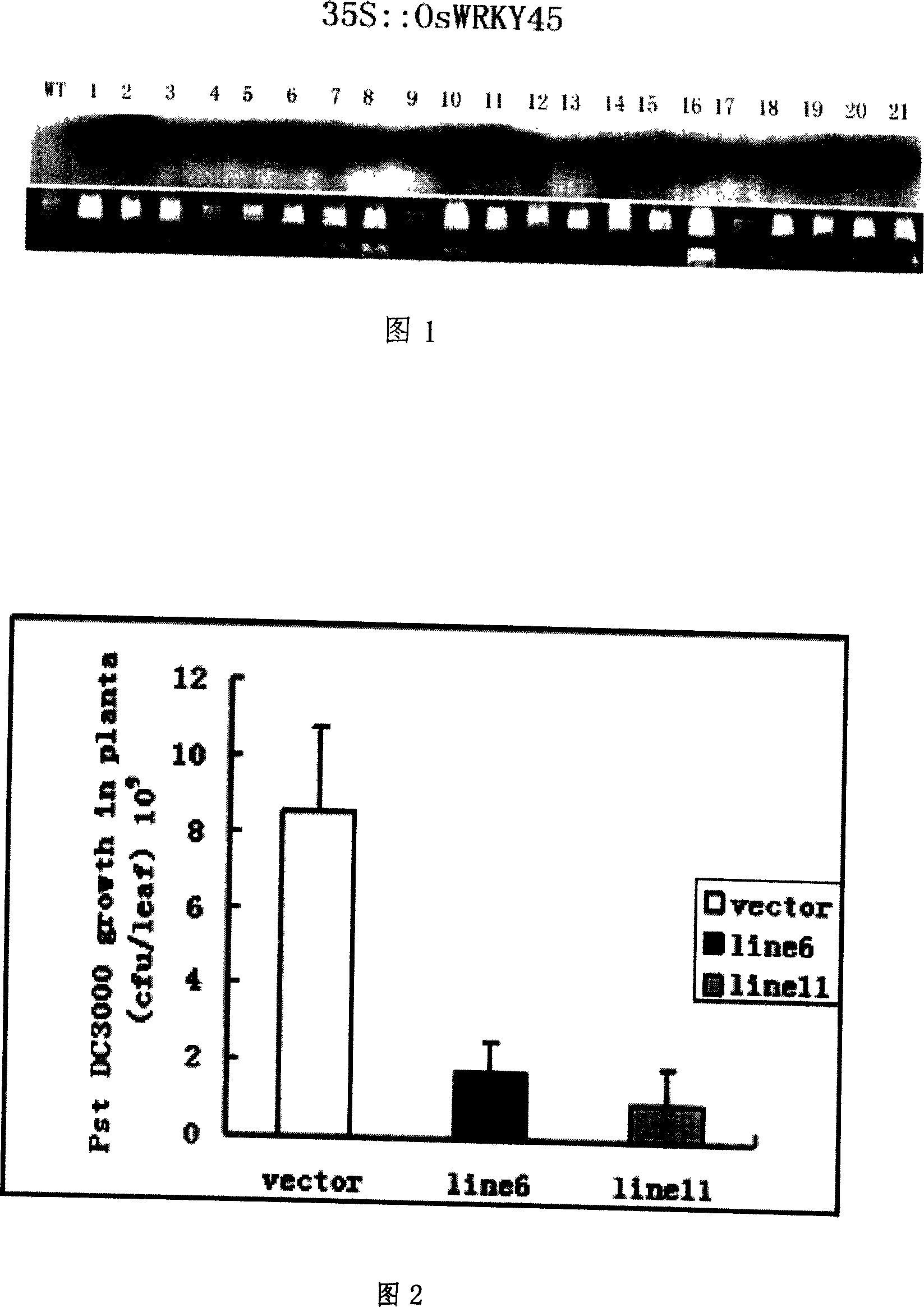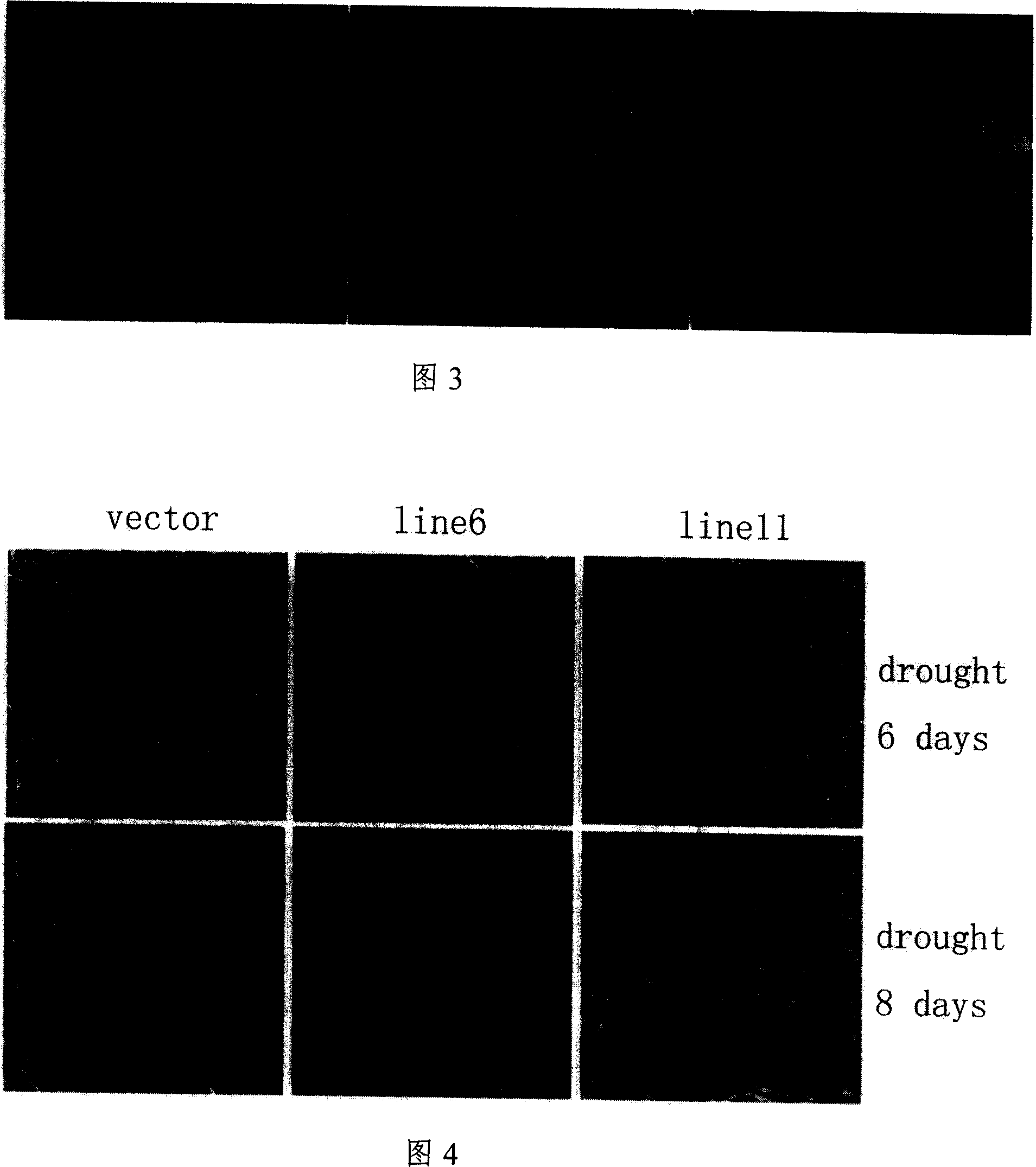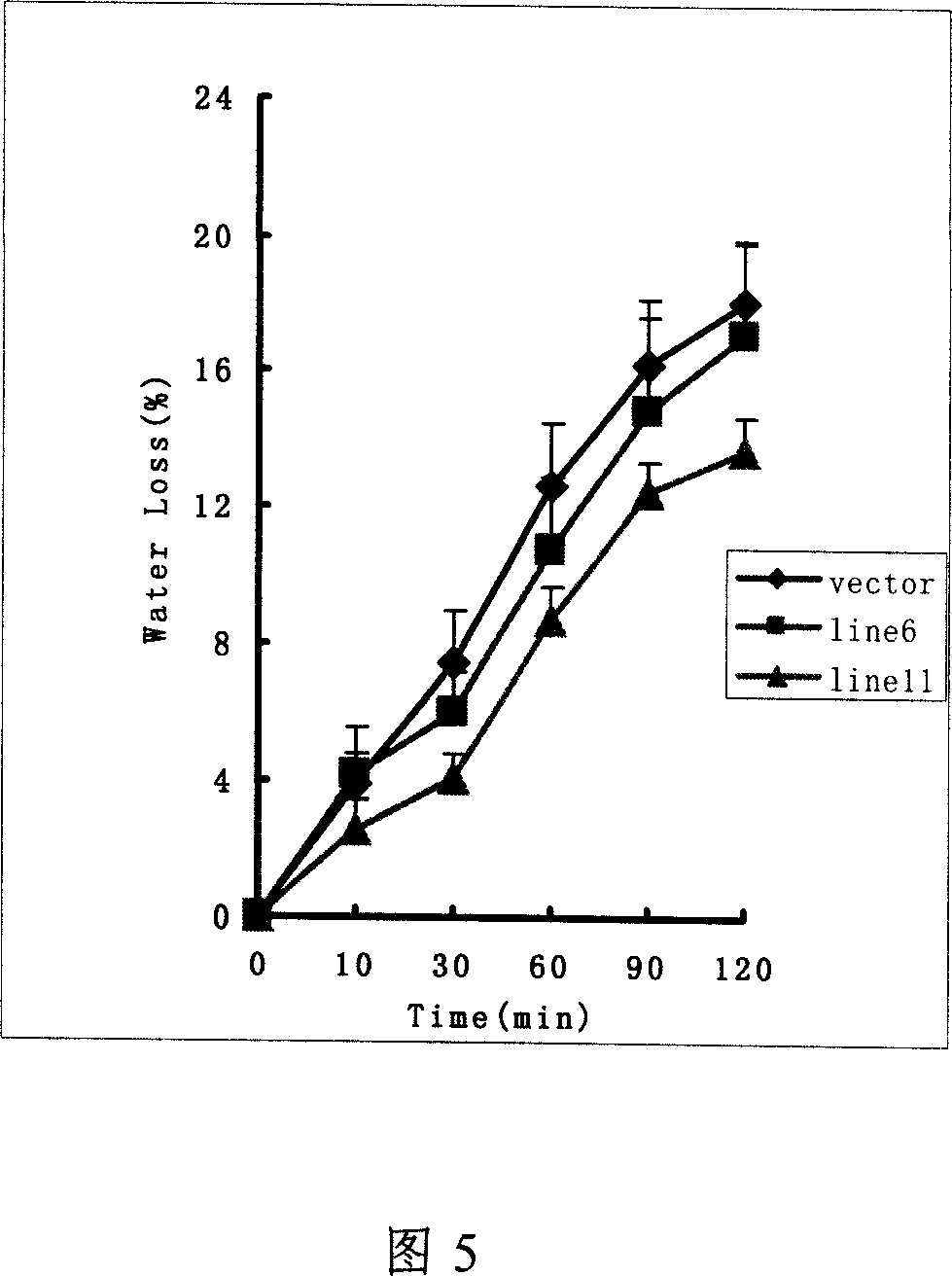WRKY45 gene of paddy rice, preparation method and application
A gene and rice technology, applied in the field of agricultural biology, can solve the problems that the WRKY45 gene function has not been truly revealed, and the gene function has not been elucidated, so as to achieve the effect of improving disease resistance and drought resistance and broad application prospects
- Summary
- Abstract
- Description
- Claims
- Application Information
AI Technical Summary
Problems solved by technology
Method used
Image
Examples
Embodiment 1
[0034] Embodiment 1--The cloning of WRKY45 cDNA
[0035]Total RNA was extracted from rice seedlings using the modified method of Logemann et al. (1987). According to the procedure of the cDNA synthesis and library construction kit (BD Clontech), a cDNA library induced at low temperature (4° C.) for 2 h was constructed. According to the nucleotide sequence of the rice WRKY45 gene, corresponding primers are designed, and RT-PCR amplification is performed to obtain part of specific gene fragments. Subsequently, the RT-PCR amplification product was cloned into the pMD18-T vector (Dalian TaKaRa Company), and the amino acid sequence was sequenced and predicted. Finally, the obtained partial DNA fragment of the specific rice WRKY45 gene was used as a probe to screen the rice cDNA library to obtain the full-length cDNA of WRKY45, as shown in the sequence table.
Embodiment 2
[0036] Example 2--Screening of Highly Expressed WRKY45 Transgenic Plants
[0037] The obtained full-length cDNA of WRKY45 was cloned into pOCA30. The constructed plasmid was transformed into Agrobacterium LBA4404, and the living plant Agrobacterium flower dipping method was used for transformation, and the obtained transgenic seeds were obtained by using a method containing kanamycin (50 μg ml -1 ) MS medium for screening to obtain T 1 Transgenic plants were further confirmed by northern blot analysis. The test results are shown in Figure 1.
Embodiment 3
[0038] Embodiment 3--disease resistance analysis
[0039] Highly expressed WRKY45 and wild-type Arabidopsis plants grown for 4 weeks, Arabidopsis leaves injected with Pseudomanassyringae pv.Tomato strain DC3000, the bacterial solution concentration is OD 600 = 0.001. After culturing for 72 hours, samples were taken and plated, and the number of colonies was counted for analysis. The test results are shown in Figure 2.
PUM
 Login to View More
Login to View More Abstract
Description
Claims
Application Information
 Login to View More
Login to View More - R&D
- Intellectual Property
- Life Sciences
- Materials
- Tech Scout
- Unparalleled Data Quality
- Higher Quality Content
- 60% Fewer Hallucinations
Browse by: Latest US Patents, China's latest patents, Technical Efficacy Thesaurus, Application Domain, Technology Topic, Popular Technical Reports.
© 2025 PatSnap. All rights reserved.Legal|Privacy policy|Modern Slavery Act Transparency Statement|Sitemap|About US| Contact US: help@patsnap.com



